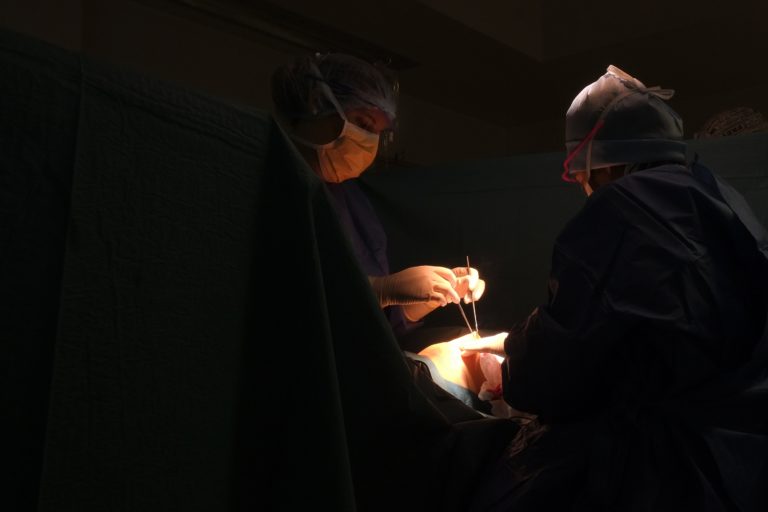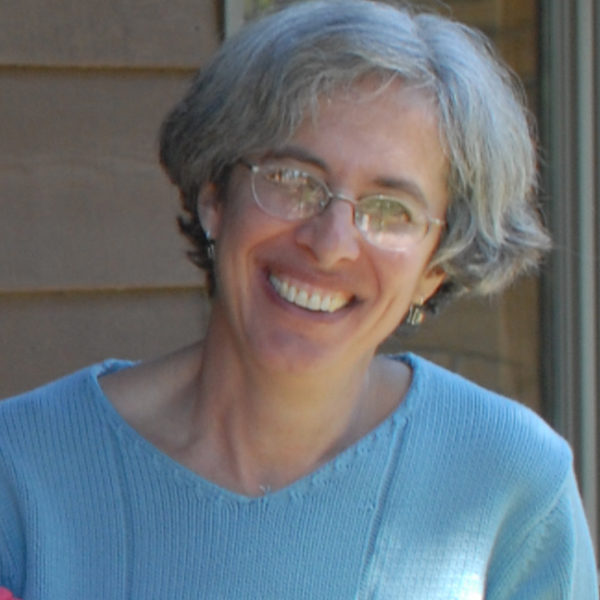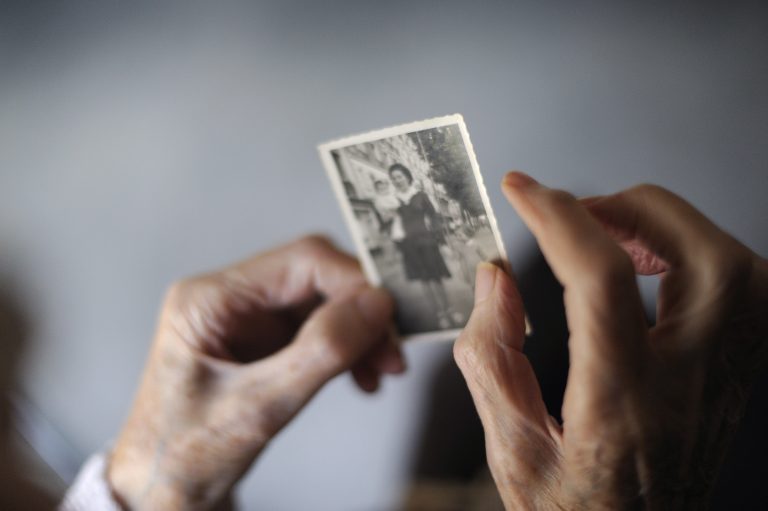
Doctors operate a patient at the one-day surgery department of the French hospital institut Curie specialized in cancer treatment, on November 4, 2014 in Paris. Image by Dominique Faget/AFP/Getty Images, © All Rights Reserved.
Who Will Be My Guide in This Darkness?
Every summer in a flowerbed behind our house, hollyhocks bloom. The plants are emerging from the dark, wintry soil, deep green heart-shaped leaves as big as the palm of my hand. Now they are sending up spiky stems that tower high over my head, laden with blossoms like teacups. I find myself thinking about those flowers one afternoon as I sit in a conference room in the Children’s Center of the Johns Hopkins Hospital, talking to a group of pediatric oncology fellows about death.
Fellows are oncologists in training. These young doctors have finished their general pediatric residencies and have embarked on three additional years of training to learn how to treat children with cancer. The fellowship is an arduous one, and many of them struggle with it.
One of the goals of the program is the development of healthy coping mechanisms. That’s where my colleague Dr. Benjamin Oldfield and I come in. Together we run a program called AfterWards in the Children’s Center. Through literature, art, and writing we prompt caregivers to talk about aspects of their work that often receive short shrift during the busy, hectic hospital day. Today the topic is Isabel Hemon.
Isabel was only nine months old when she was diagnosed with atypical teratoid rhabdoid tumor (ATRT), a particularly malignant kind of brain cancer. From the onset her prognosis was grim. She suffered through multiple surgeries and rounds of chemotherapy in her hometown of Chicago before finally dying three short months later.
We know Isabel’s story because her father wrote about her in a piece he called “The Aquarium” in The New Yorker. Isabel’s illness, he says, made him feel as if he were living behind glass: visible yet separate from the rest of the ordinary world. Aleksandar Hemon’s memoir is beautifully written. It’s also harrowing and brutally honest, brimming with the rawness of his pain.
Many of the fellows are taking it hard. One confesses the piece left her physically ill. Another questions why Hemon wrote it at all. “Why would anyone want to read a story like this?” she asks. “What possible benefit is there in it?”
I still vividly recall my husband’s pediatric oncology fellowship, 28 years ago. He began seeing patients in the summer, and at first things went well. “Maybe,” he said hopefully, “oncology won’t be so hard after all.” Then winter came, and as the days grew shorter, the darkness seemed to cast a shadow on his clinical service as well. Some of his patients relapsed. By the time the spring came, he had to buy a new suit jacket for the funerals he attended. After a particularly hard day in the hospital, he would come home and take refuge outside, working in his garden, planting seeds, nurturing tender young sprouts.
The fellows in the room with me now are only just emerging from their own long, dark winters. What can I say to help them bear the suffering they must witness? What can Aleksandar Hemon?
Isabel was seen at Children’s Memorial for a very short time. But often children with cancer go through treatment programs lasting years, giving their doctors time to get to know them — or not. “It’s a mistake to get attached to these patients,” one of the fellows says. “No one should expect that of us.” I sympathize. I understand the emotional risks involved.
One of the first children my husband ever treated was a five-year-old redhead named April. April’s cancer took her through a series of remissions and relapses lasting more than a decade. During that time, my husband had plenty of opportunities for conversations with her mother and her father, who was a builder, and her younger brother. He learned April liked flowers, and filled her garden with blue stars and morning glories. But treating April also took a toll on him. Is the fellow right? Should he have done more to protect himself?
“Why me?” parents ask when they hear their child has cancer. “Why is this happening to us?”
Hemon says the news is unlike anything parents could ever imagine. Like Dante, in the middle of their lives they have been thrust unexpectedly into a dark and dangerous place:
“Midway upon the journey of our life
I found myself within a forest dark,
For the straightforward pathway had been lost.
Ah me! how hard a thing it is to say
What was this forest savage, rough, and stern,
Which in the very thought renews the fear.
So bitter is it, death is little more;
But of the good to treat, which there I found,
Speak will I of the other things I saw there.”
In the midst of their descent into hell, families hope for some kind of “good.”
“All families want from us is a cure,” a fellow says. “It’s as simple as that. That’s what they come here for.” Hemon hardly had time to hope for a cure for his daughter. The family lurched from one crisis to the next. April’s family wanted a cure for their daughter, too, and more than anything my husband wanted to give them one. But doctors are only as good as the tools at their disposal.
“Yes, of course,” I say. “But these things are never simple. Is it possible families want something more?”
A better question might be: what do these young doctors want from their patients? Doctors are trained to save lives. Anything less is viewed as a defeat. Is it possible to salvage something good from an unwanted outcome?
Dante didn’t have to take his journey into darkness alone. He had Virgil as his guide, and that made all the difference:
“Therefore I think and judge it for thy best
Thou follow me, and I will be thy guide,
And lead thee hence through the eternal place,
Where thou shalt hear the desperate lamentations …
Hemon, too, had guides through Isabel’s illness: her doctors. We feel the depths of his pain when he describes the surgeons who took her into the operating room as “a gang of masked strangers.” But he also writes gratefully of her oncologists, who stood by him from the beginning, parceling out information as he could handle it, helping him “understand things that mattered.” In the end, when Isabel lay dying, they were there to help him make the final decision to let her go.
During the years that April was my husband’s patient, he watched her grow from a small child into a beautiful, talented young woman. He was there to see her when she performed in her high school play. Soon after she entered the hospital for the last time. A few months after her funeral, we received a letter from her parents. Inside was a packet of seeds. “From April’s Garden,” the note said.
Is there any meaning in a child’s death? Is there any meaning in April’s death? In Isabel’s? Hemon doesn’t seem to think so. After his daughter died, he says, he and his wife left the hospital like “refugees,” driving on “meaningless” streets. “Isabel’s suffering and death did nothing for her, or us, or the world,” he writes. “We learned no lessons worth learning; we acquired no experience that could benefit anyone.”
One of the things parents fear most when they lose a child is that she will be forgotten. We feel that urgency in Hemon’s memoir, written furiously in the months after Isabel’s death. Like Coleridge’s ancient mariner, he has borne witness to an extraordinary event and now is condemned to tell the tale. But through his memoir, Hemon does more than just recount the story of Isabel’s brief — and clearly meaningful — life. He memorializes it.
For over a quarter century now, my husband has been treating children with cancer. Thankfully he has experienced many, many good outcomes. From time to time we experience the joy of receiving wedding invitations and birth announcements from former patients. But the losses weigh heavily on him.
“I know a lot of dead children,” he’s apt to say at particularly dour moments. At times like these he walks out to his garden to see how his flowers and vegetables are doing. Later in the summer the hollyhocks will bloom again. One of them is particularly beautiful, with deep violet blossoms bordering on black. It came from April’s garden. Each year we look at it, and we remember.

